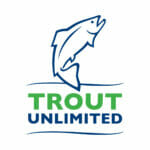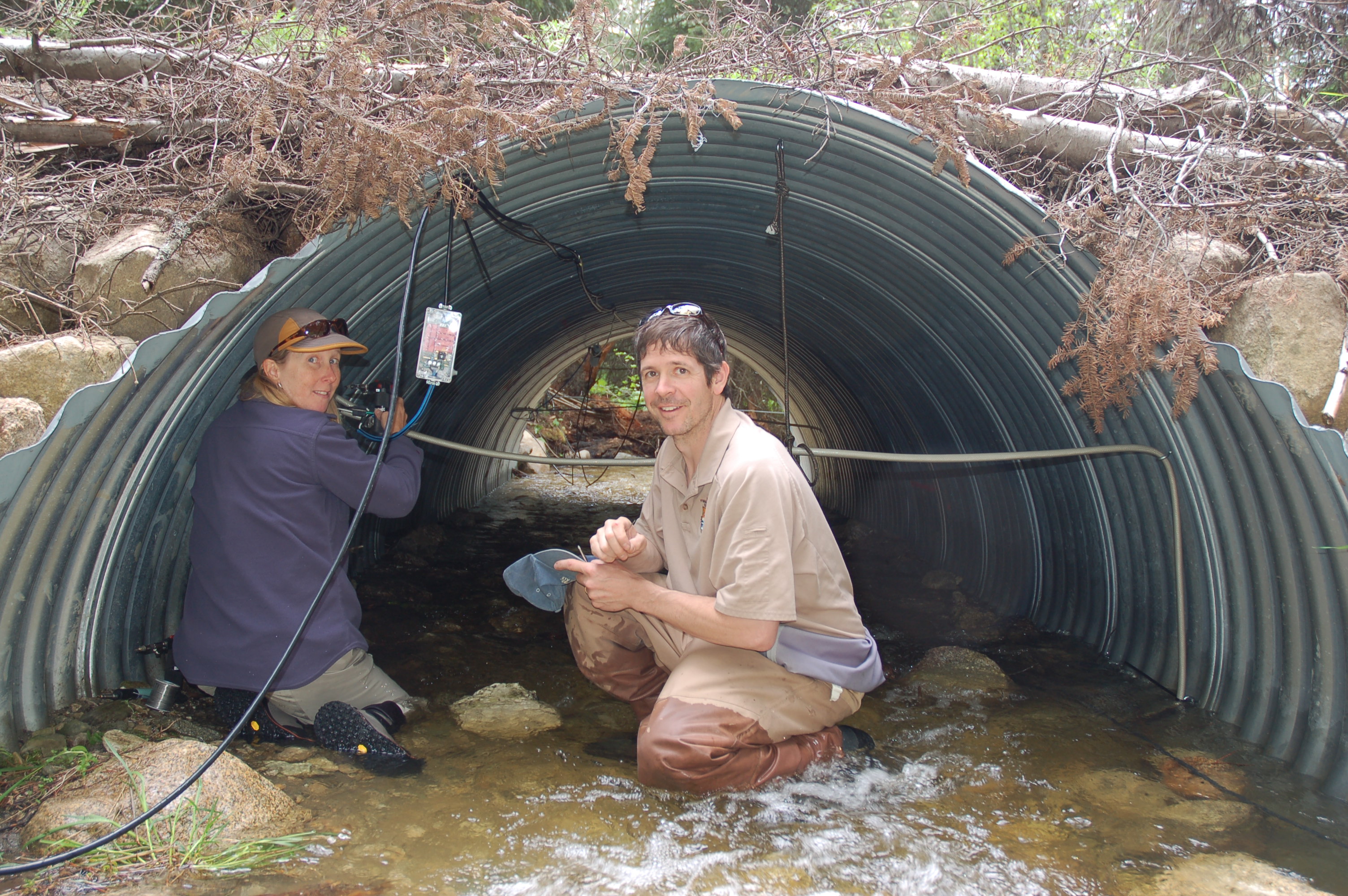Helen Neville, left, and Doug Peterson, right, install a stationary PIT antenna on culvert to track fish movement. Trout Unlimited photo.
By Helen Neville
How many times do you cross a river while heading to your favorite fishing spot? Unless you are looking for a new place to fish, chances are you don’t make a habit of counting the crossings. Yet each crossing could impact your experience.
Fish passage barriers are often created at road crossings — limiting fish movement and, possibly, the ability of fish to spawn.
Most of these stream crossings channel the water through a culvert — a long metal pipe embedded in the ground designed to move water under the road.
In fact, there are hundreds of thousands of road culverts across the country – and that doesn’t include dams or irrigation diversions. The vast majority of these structures were installed at a time when people simply didn’t think about how they might affect aquatic organisms. More often than not culverts will not allow fish to pass through them, creating a barrier to fish movement.
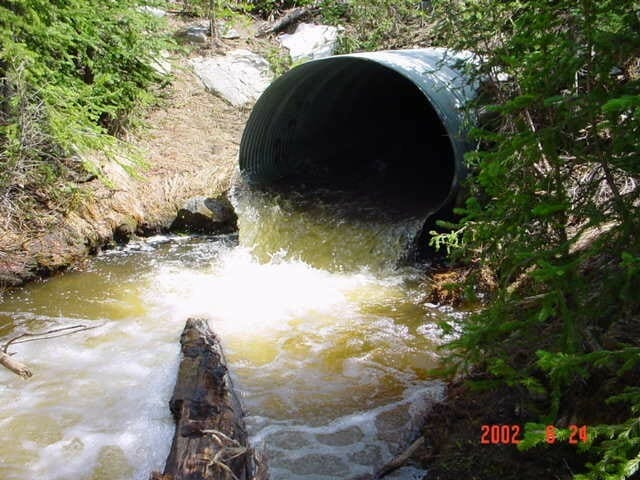
Courtesy photo.
As a consequence, fish habitat is effectively chopped up into small stretches of stream which are isolated above or between culverts. This habitat fragmentation poses a huge problem for fish. Isolated fish can’t move to access the different types of complex habitats they need over their lifetime or find refuge during fire, floods or droughts. They also can’t express a migratory life history, where some fish move downstream to larger, warmer habitats to winter and grow bigger (much bigger than the resident fish that don’t migrate) before returning to their headwater streams to spawn. As a result, isolated populations are more prone to extinction.
It should come as no surprise, then, that replacing culvert barriers with structures that enable fish or other aquatic organism passage is a major conservation priority in the United States, one that comes at great expense — ranging into the hundreds of millions of dollars across a given river basin). Yet despite this massive nation-wide effort, we still have little data to confirm that fish are able to pass through the new structures effectively, and even less information to guide managers about which methods are most informative and cost-effective for monitoring fish passage.
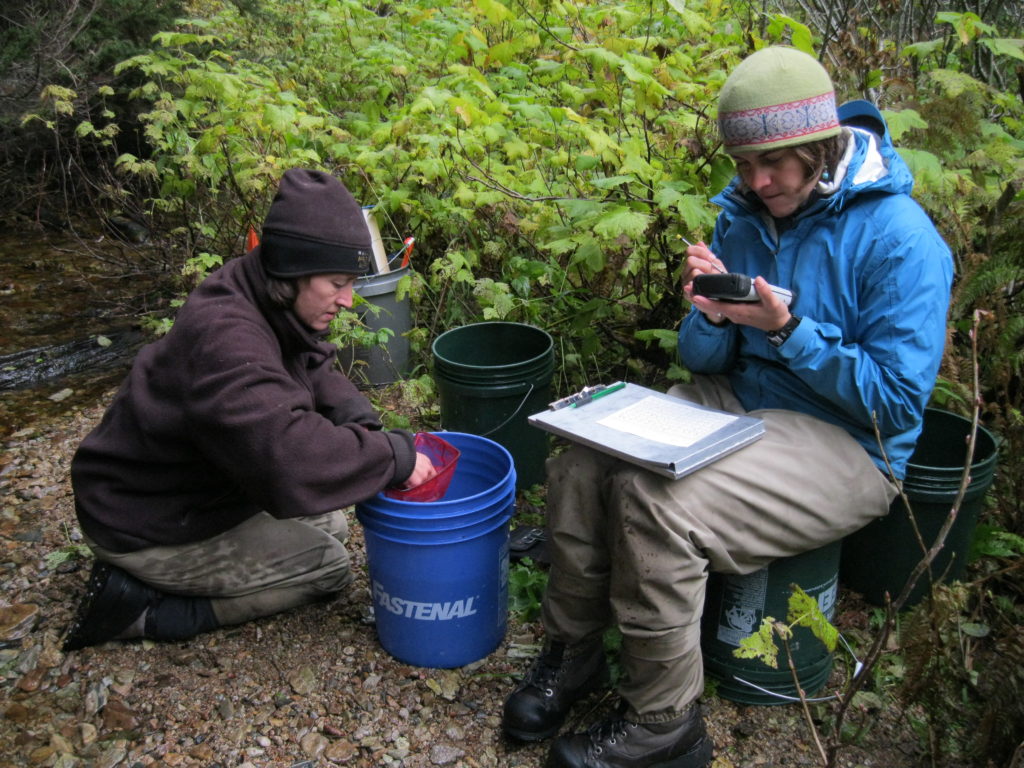
Doug Peterson, a biologist at the Fish and Wildlife Service, and Helen Neville, Trout Unlimited’s Senior Scientist, aim to provide this much-needed guidance in a recent paper in the North American Journal of Fisheries Management.
In a field study across four streams in Montana and Idaho, commissioned by the U.S. Forest Service’s Aquatic Organism Passage Program, Peterson and Neville compared the relative performance and cost of four different approaches to verifying upstream fish passage of native cutthroat and non-native brook trout through recently remediated culverts.
Fish were either batch-marked (with a simple color mark to signify that they were initially captured downstream of the culvert) or tagged with PIT tags (passive integrative transponder tags, which have an electronic individual ID that can be scanned with technology similar to a grocery check-out scanner). After initial tagging downstream, upstream movement of any fish through the culvert was assessed using either electrofishing to capture fish and determine if they had a batch-mark or PIT tag; a mobile antenna to detect fish with PIT tags without capturing the fish or a set of stationary antennae placed in-stream at each end of the culvert that detected fish when they pass.
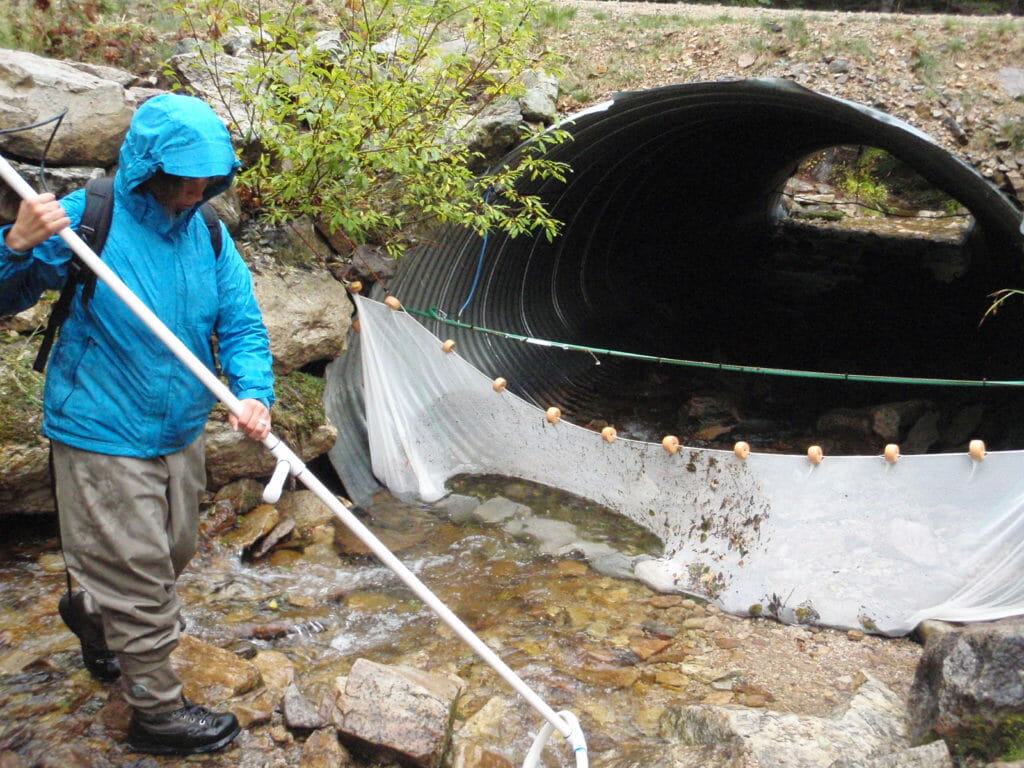
Doug Peterson/U.S. Fish and Wildlife Service
These monitoring methods were also compared to a genetic method the authors evaluated in a previous study; the genetic approach used pedigree analyses to determine when siblings were captured on either side of the culverts, indicating they had passed through it.
Each method was evaluated based on various detection metrics (number of individuals detected, how often they were detected, and how long it took to detect their first movement), relative cost, strength of inference, and how accessible the method and results would be to typical field biologists and managers.
Ultimately, all of the methods captured fish movement though the stationary antennae, which monitor continuously were the first to detect movement and detected twice as many PIT tagged fish moving upstream than the mobile antenna or physical recapture by electrofishing. Fish that were tagged within 100 meters of the culvert (as opposed to further away) were detected most frequently by all methods.
As for cost, the stationary PIT detection antennas, mobile PIT antenna, and genetic pedigree analyses were comparatively expensive for a single‐year study because of PIT equipment and laboratory costs, respectively, though some of these costs would be scaled back for multi-year monitoring.
Electrofishing was less than half the cost of the other methods. However, each method provides different degrees of information (for instance, batch marking could demonstrate that a fish moved at some point during the study, while stationary PIT antennae capture continuous information about movement, night and day and back and forth through the culvert) so ultimately the choice of method will depend on the management question at-hand.
This study provides the first comparison of the performance and relative costs of these common field methods at the same set of culverts, and should prove to be a useful resource for monitoring the effectiveness of fish passage projects in the future.
Funding for the study was provided by the Lolo National Forest and San Dimas Aquatic Organism Passage Monitoring Project of the U.S. Forest Service, and the U.S. Fish and Wildlife Service’s National Fish Passage Program and a cooperative agreement between USFWS and Trout Unlimited.
Helen Neville is the Senior Scientist for Trout Unlimited


